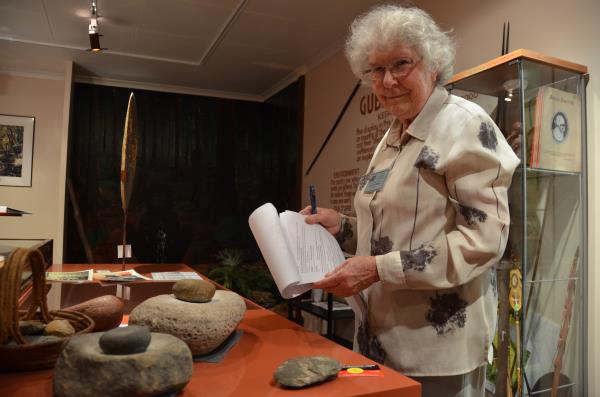
By JONATHON HOWARD
EVERY day hundreds of busy commuters and holiday makers drive past Murdering Creek Road unaware of the horrendous events that took place there so many years ago.
But a forum at the Noosa Museum in Pomona this Saturday 25 October, will raise the idea of memorialising Murdering Creek Road on the banks of Weyba Lake.
The idea has captured the attention of Indigenous Gubbi Gubbi Elder Dr Eve Fesl (OAM, PhD) who has voiced her support for the memorialisation of the massacre that took place at Murdering Creek Road about 150 years ago.
The memorialising of Murdering Creek Road was just one of the hot topics expected to be raised during the Noosa Museum’s Past Present and Future Forum.
The forum will also hear from Noosa Councillor Tony Wellington who will speak about the council’s new democracy program which will assist council decision making, an update about the Mill Point archaeological project and the future of koala habitats across the Noosa Biosphere.
Speaking with Noosa Today, Dr Fesl said the memorialising of Murdering Creek Road was an important step for Noosa and for local Indigenous people would be as significant as Anzac Day commemorations.
“While I haven’t seen the specifics of the forum or proposal yet, I support the idea of memorialising the events that took place at Murdering Creek Road,” she said.
“This would be significant recognition and something that local Indigenous people would view as important as Anzac Day.”
THE STORY BEHIND MURDERING CREEK
The story of Murdering Creek Road is one of deceit by English colonists towards a group of unsuspecting Indigenous people who had encroached on livestock and farmland.
While accounts of the event are patchy, it’s believed early relations between the Gubbi Gubbi tribe and Europeans became acrimonious after local Indigenous people were deprived of their hunting grounds.
The people began to spear livestock owned by the ever encroaching settlers and the reaction from the settlers was nothing short of brutal.
One version of the events suggested that an armed party was put together by the Yandina Station manager and they were said to have set up an ambush along the banks of what is still called, Murdering Creek.
One of the party members waded out into the lake as a decoy and lured nearby Aboriginal fishermen into the line of gunfire.
How many deaths occurred is unknown, but tens of thousands of years of aboriginal occupation was over by the end of the century, about 40 years after Europeans entered the area.
Reminders of Gubbi Gubbi tribal life are still evident today around Lake Weyba in the form of extensive shell middens, scar or canoe trees and even a large stone fish trap in the southern end of the lake.







